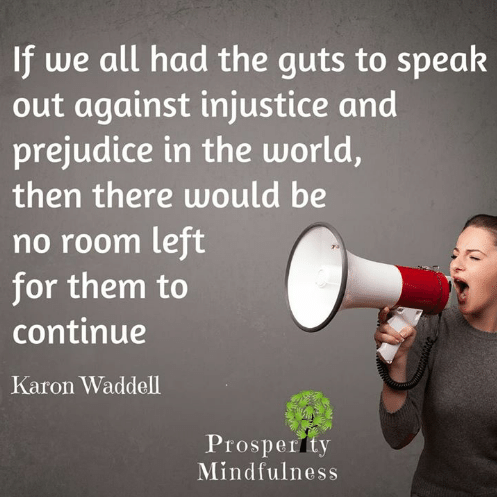Campbell Innes, 2017
Before Liberal Party Senator and outspoken critic of Islam, Cory Bernardi, left the party to form the Australian Conservatives, he warned mainstream politicians were ignoring the concerns of the ‘silent majority’ (ABC, 2016). He alleged one of those concerns was with Islam. Leader of the One Nation party, Pauline Hanson, recently called for the people of Australia to boycott halal-certified Easter eggs or risk financing the ‘Islamisation of Australia’ (Shine & Dunlevie, 2017). Amplified through the media, these statements represent the pointy end of a prejudice that sees Sydney Muslims experience racism at three times the rate of other Australians (Dunn, Atie, Mapedzahama, Ozalp & Aydogan, 2015). But is this the result of a silent majority or a vocal minority?
A recent survey revealed that only 1 in 10 Australians displayed strong feelings of Islamophobia – negative and hostile attitudes towards Islam and Muslims (Hassan & Martin, 2015). These results are slightly lower than those obtained in a study in 2012 which found only 20% of participants were overtly rejecting of Australian Muslims (Pedersen & Hartley, 2012). In either case, it would indeed appear to be a minority rather than the majority that has a prejudice against Australian Muslims.
However, when it comes to the impact on prejudice that a group can have, more important than the size of the group, is the perceived consensus of the group’s views. A study concluded that people who held negative views towards Australian Aboriginals believed that many more people shared their views than actually did (Watt & Larkin, 2010). This is an example of the false consensus effect. In fact, the more prejudiced someone was, the more likely they were to believe their views were mainstream (Watt & Larkin, 2010). Accordingly, a prejudiced minority may be more likely to express their views as they believe they are expressing the consensus view. Conversely, there is a tendency for the unprejudiced majority to speak out less as they believe the consensus view is more prejudiced than it actually is (Watt & Larkin, 2010).
Addressing this, an increase in preparedness to speak out against prejudice towards Muslim Australians was one of the key achievements of a cross-cultural intervention course (Pedersen, Paradies, Hartley & Dunn, 2011). The study used 14 anti-prejudice strategies to achieve this result. However, the three strategies given most weight were the use of empathy as opposed to guilt, the power of social norms and the provision of information (Pedersen, Paradies, Hartley & Dunn, 2011). Let us look first at empathy.
A study in the United Kingdom found that a link between a person’s attachment style and levels of prejudice they exhibited towards Muslims was mediated by empathy (Boag & Carnelley, 2016). Higher levels of prejudice were associated with low levels of empathy and vice versa. One mechanism through which to increase empathy is perspective taking. This approach involves actively considering outgroup member’s mental states and has been demonstrated to reduce many of the biases that can negatively mediate intergroup relations (Todd & Galinsky, 2014). A review of experimental research in this area found that perspective taking increased both “parallel empathy” – feeling as another, and “reactive empathy” – feeling for another (Todd & Galinsky, 2014).
As discussed, our perception of social norms has an influence on our preparedness to speak out. Attitudes towards Muslims have been found to be closely aligned to negative media attitudes (Pedersen & Hartley, 2012). Further, Watt and Larkin (2010) also found that media attitudes, as opposed to our own attitudes and peer attitudes was the main contributor to perceptions of community norms for both prejudiced and unprejudiced people. This highlights the impact that an increase in positive attitudes towards Muslims portrayed through the media might have.
The third mechanism for prejudice reduction is the provision of counter information that challenges in-group biases and stereotypes. A recent study suggests that stereotype reduction can occur both directly and indirectly. When explored in a gender-based leadership context, stereotype-inconsistent information provided to men altered not only their stereotype of female leadership style but of male leadership style as well (Maris, Claes, Van Damme & Hoorens, 2016). Given this indirect stereotype change effect was possible in a real-world entrenched stereotype, it is quite conceivable that this effect could be replicated in stereotypes generated by prejudiced individuals and Australian Muslims.
Finally, prejudice reduction can often result from intergroup contact so long as certain conditions such as equal status, support by social institutions and common goals characterise the interaction. This contact effect has been substantiated repeatedly and has formed the foundation of much prejudice reduction research (Abrams, Van de Vyver, Houston, & Vasilijevic, 2017). It is heartening then that a new study has found support for the positive effects of intergroup contact on views towards Muslims in the United Kingdom both before and after the London terrorist attacks of 2007 (Abrams, Van de Vyver, Houston, & Vasilijevic, 2017).
There may indeed be a silent majority in Australia. However, its persuasion could well be different to what many expect. Providing information that challenges stereotypes, acting in ways that challenge perceived prejudiced social norms and attempting to take the perspective of Australian Muslims could encourage the silent majority to speak up and challenge the prejudice of the vocal minority.
References
Australian Broadcasting Corporation. (2016, November 10). Bernardi warns of populist backlash in Australia. RN Breakfast. Retrieved from http://www.abc.net.au/radionational/programs/breakfast/bernardi-warns-of- populist-backlash-in-australia/8011612
Abrams, D., Van, d. V., Houston, D. M., & Vasiljevic, M. (2017). Does terror defeat contact? Intergroup contact and prejudice toward Muslims before and after the London bombings. Peace and Conflict: Journal of Peace Psychology, doi:http://dx.doi.org/10.1037/pac0000167.
Boag, E. M., & Carnelley, K. B. (2016). Attachment and prejudice: The mediating role of empathy. British Journal of Social Psychology, 55(2), 337-356. doi:http://dx.doi.org/10.1111/bjso.12132.
Dunn, K., Atie, R., Mapedzahama, V., Ozalp, M., & Aydogan, A. F. (2015). The resilience and ordinariness of Australian Muslims: Attitudes and experiences of Muslims Report. Penrith, NSW: Western Sydney University. Retrieved from https://www.isra.org.au/site/user-assets/docs/the20resilience20and 20ordinarin ess20 of20australian20muslims-wb.pdf
Hassan, R., & Martin, B. (2015). Islamophobia, social distance and fear of terrorism in Australia. Adelaide, South Australia: University of South Australia. Retrieved from http://www.unisa.edu.au/Global/EASS/MnM/ Publications/Islamophobia_ report.pdf
Maris, S., Claes, J., Van Damme, C., & Hoorens, V. (2016). Indirect stereotype change in artificial and real-life stereotypes. Social Cognition, 34(1), 55-80. doi:http://dx.doi.org/101521soco201634155.
Pedersen, A., & Hartley, L., K. (2012). Prejudice Against Muslim Australians: The Role of Values, Gender and Consensus. Journal of Community & Applied Social Psychology, 22, 239-255. doi:http://dx.doi.org/10.1002/casp.1110
Pedersen, A., Paradies, Y., Hartley, L. K., & Dunn, K. M. (2011) Bystander antiprejudice: Cross-cultural education, links with positivity towards cultural ‘outgroups’ and preparedness to speak out. Journal of Pacific Rim Psychology, 5(1), 19-30. 19-30. doi:http://dx.doi.org/10.1375/prp.5.1.19
Shine, R., & Dunlevie, J. (2017, April 12). Pauline Hanson’s call for boycott of hala-certified Easter eggs could cost jobs, union warns. ABC News. Retrieved from http://www.abc.net.au/news/2017-04-12/union-slams-hanson-call-for-easter-egg- boycott/8439504
Todd, A. R., & Galinsky, A. D. (2014) Perspective-taking as a strategy for improving intergroup relations: Evidence, mechanisms, and qualifications. Social and Personality Psychology Compass, 8(7), 374-387. doi:http://dx.doi.org/10.1111/spc3.12116
Watt, S. E., & Larkin, C. (2010). Prejudiced people perceive more community support for their views: The role of own, media and peer attitudes in perceived consensus. Journal of Applied Social Psychology, 40(3), 710-731. doi:http://dx.doi.org/10.1111/j.1559-1816.2010.00594.x



Recent Comments